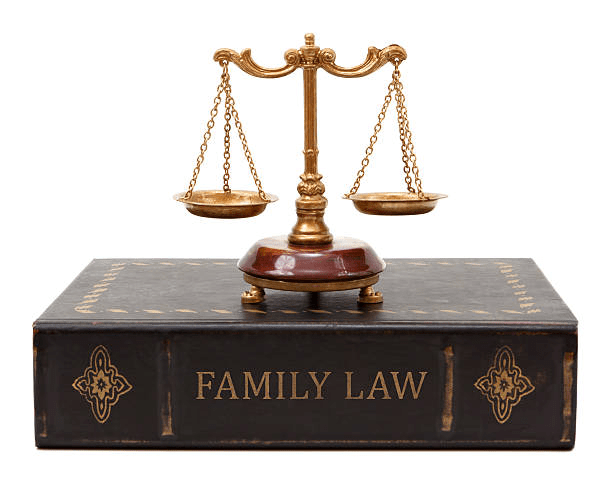Family Law Acts state how to handle family law disputes for conflicted parents or family members. According to Section 1, the Act is cited as Family Law Act 1975. This is an Act that deals with marriage, divorce, and matrimonial causes. These factors may either relate to parental responsibility for children or financial matters that arise from relationship breakdowns.
This Act was first introduced as a Bill on December 13, 1973. Then, according to Section 2 of the Family Law Act, this Act came into effect on June 1, 1976. The Act has 15 Parts that consist of laws, legislations, and conditions that help the Federal Circuit Court or Family Court (it has family law jurisdiction) decide to make a judgement in family law matters. This article will discuss the first parts of the Family Law Act 1975.
Section 3: Repeal and Saving
According to Section 3 of the Family Law Acts, Matrimonial Causes Acts 1959, 1965, and 1966 are repealed. Adultery, desertion, cruelty, habitual drunkenness, imprisonment, and insanity were among the 14 grounds for granting a divorce under the Matrimonial Causes Act 1959. A spouse had to establish or prove marital fault in order to succeed on one of these grounds.
The Australian family law system was intended to allow genuinely injured spouses to end their marriages. However, it was also protecting the institution of marriage by not allowing bored or disillusioned spouses to divorce at will. The introduction of the Family Law Act in 1975, however, eliminated the need to prove marital fault. This bill was introduced so federal family law courts can:
- Remove the moralistic or religious approach to marriage
- Align the law with social and cultural changes
- Promote the idea of parties leaving a marriage equally and neither is legally liable for its failure
A ‘no-fault’ divorce clause was included in the 1975 Family Law Act after its proclamation. This essentially means that it is not necessary for ex-spouses to prove that either of them is “at fault” for the breakdown of a marriage in order for a couple to divorce. Since then, the process of obtaining a divorce has become both simpler and less expensive.
This is because some of the otherwise unnecessary hostility surrounding the divorce procedure itself was removed. However, some disagreements over property settlement, spousal maintenance, child custody, and child support can still cause a significant amount of disharmony between parties.
Section 4: Interpretations in the Family Law Act
Section 4 of the Family Law Act consists of numerous definitions of terms that are used across the Act. Some definitions are self-explanatory, while some have conditions and unique definitions. For instance, “breakdown” is defined online as the failure of a machine or the failure of a relationship. But within the context of Family Law Acts, a breakdown is in relation to marriages and de facto relationships. The rest of the family law definitions and interpretations are found in Section 4 .
Section 4AA: De Facto Relationships
People who are in a de facto relationship are not legally married to each other and are not related by family. Simply, de facto couples live together on a genuine domestic basis. De facto relationships can also exist outside of marriage and between 2 persons of different or same sexes. Here are some considerable factors in determining the existence of a de facto relationship according to the Family Law Acts:
- Duration of the relationship is 2 years in order to call couples a de facto couple
- Nature and extent of the couple’s common residence
- If there are sexual relations between the couple
- Degree of financial dependence, interdependence, and any financial arrangements between the couples
- Ownership, usage, and acquisition of the couple’s property
- Degree of mutual commitment to a shared life
- Whether the relationship is registered under a prescribed state or territory law
- Care and support of children and who has parental responsibility and if equal shared parental responsibility exists
- Reputation and public aspects of the relationship

Section 4AB: Definition of Family Violence
According to the Australian Institute of Health and Welfare (AIHW) in 2018, about 1 in 6 women and 1 in 16 men experience domestic violence. 1 in 6 women and 1 in 9 men also experience physical or sexual abuse before the age of 15. Family violence is an act of threatening and controlling a person or a family member. Here are examples of family violence behaviours in this article about Family Law Acts:
- Assault which led to physical or psychological harm
- Sexually abusive behaviour
- Stalking
- Repeated derogatory taunts
- Intentional damage or destruction to property
- Intentional injuries that lead to the death of an animal
- Denying family members from their financial freedom
- Unreasonably withholding someone from providing financial support to another
- Preventing family members from making or maintaining connections with his/her family. Friends, or culture
- Unlawfully preventing someone from his/her liberty
A child is exposed to family violence if the child sees, hears, or experiences it. Some instances where a child is exposed to family violence include the child:
- Seeing or hearing an assault of a member of the child’s family
- Comforting or providing assistance to an assaulted family member
- Cleaning up a site after an offender has intentionally damaged the property of another family member
- Being present when police or ambulance officers attend an incident that involves family violence.
- Experiencing child abuse
Section 4A: Third-Party Proceedings and Financial Agreements
According to Section 4A of the Family Law Acts, a binding financial agreement is a private contract between partners. It shows how partners will divide their assets due to divorce or separation. This contract can also outline the need for spousal maintenance that is the responsibility of financially supporting a lower-earning partner after separation or divorce. Third-party proceedings and financial agreements generally consist of a combination of:
- Parties to a financial agreement and the legal representatives of any of those parties who passed away. This also includes a combination of parties or representatives; or
- A creditor, the legal representative of the creditor if the creditor has passed, and a government body acting in the interests of a creditor.
The same third-party proceedings and financial agreements are also present in Section 4B which deals with de facto financial causes.
Section 4C: Proceeds Of Crime Authority
Section 4C outlines the meaning of proceeds of crime authority in relation to restraining orders, forfeiture orders, and freezing orders. A restraining order protects a person from someone who commits family violence or personal violence against them. Apprehended violence orders (AVOs) and apprehended domestic violence orders (ADVOs) have the same effect as restraining orders.
Meanwhile, a forfeiture order is an order which permanently deprives an individual of his/her property if it is “tainted” with criminal offending. A freezing order is a type of injunction that prevents a party from selling their assets in order to avoid paying a future order of the family court.

Understanding The Family Law Act With JB Solicitors
JB Solicitors have extensive knowledge of different Family Law Acts and how to apply them in court proceedings. We continue to help clients who are struggling with family violence cases and help them apply for AVOs or ADVOs for their protection. Our lawyers can also aid in making binding financial agreements for separating or divorcing couples.
If couples want to reach an amicable agreement, they may also avail our family dispute resolution services like mediation and arbitration. Family dispute resolution helps couples settle disagreements on parenting and financial matters without the involvement of courts.
Contact a family lawyer today.
